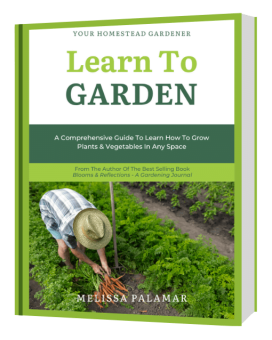Disclosure: This page might contain affiliate links. In the event of a sale, I may be awarded a small commission.
Cast Iron And Its Timeless Elegance: Benefits And Care Tips
In the world of cookware, few materials have stood the test of time as gracefully as cast iron. Renowned for its durability, versatility, and unique ability to enhance the flavor of dishes, cast iron cookware has been a homesteader’s staple for centuries. In this article, we will explore the myriad benefits of cooking with cast iron and delve into essential tips for its care and maintenance.
History of Cast Iron
The history of cast iron cookware is a fascinating one, spanning centuries and showcasing the creativity and skill of diverse cultures. Originating in ancient China around the 6th century BCE, this sturdy material gradually made its way to different parts of the world. In the 12th century, the Middle East was introduced to intricately designed cast iron cauldrons, highlighting its resilience and adaptability as a cooking medium. Over time, it gained popularity in Europe during the medieval period and became a household staple in the 16th and 17th centuries.
However, it was not until the Industrial Revolution in the 18th century that cast iron cookware truly took off, thanks to American manufacturers like Lodge Cast Iron who helped make it a widespread choice for households across the United States. The evolution of this cookware mirrors humanity’s continuous quest for culinary innovation, where durability and versatility come together to create enduring kitchen essentials.
Benefits of Cooking with Cast Iron
- Even Heating:
One of the standout features of cast iron is its exceptional heat retention and distribution. Cast iron cookware and Dutch ovens heat evenly across their surfaces, preventing hot spots and ensuring that your food cooks uniformly. This quality makes cast iron ideal for searing, frying, and baking. - Versatility:
Cast iron cookware is incredibly versatile. From stovetop to oven, these sturdy pieces can seamlessly transition between different cooking methods. Sear a steak on the stovetop and finish it in the oven, or start a casserole on the stove and let it slowly simmer in the oven – cast iron can handle it all. - Durability:
Cast iron cookware is built to last. When properly cared for, it can withstand high temperatures and resist scratches and dents. Unlike some non-stick pans that degrade over time, cast iron improves with age, developing a natural non-stick surface known as the “seasoning.” - Flavor Enhancement:
One of the unique benefits of cast iron is its ability to impart a subtle yet distinctive flavor to food. The seasoning process, where oil is baked into the iron, creates a non-stick surface that enhances the dishes’ taste over time. This makes cast iron particularly prized for certain types of dishes, like cornbread or skillet-fried chicken. - Nutritional Boost:
Cooking with cast iron can offer a nutritional boost by increasing the iron content in your food. This is especially beneficial for individuals with iron deficiencies. The longer food is cooked in cast iron, the more it absorbs iron from the cookware. - Beautiful Kitchen Decor:
Cast iron cookware serves a multipurpose function. Not only is it incredible to cook with, but it can also add extensively to your home decor. Displaying your cast iron proudly on a “casting wall” is a very rustic decor style that is super trendy and highly sought after.

Care and Maintenance of Cast Iron Cookware
To ensure your cast iron cookware lasts for generations, it’s crucial to follow proper care and maintenance practices:
- Seasoning:
Regular seasoning is key to maintaining the non-stick surface of cast iron. After cleaning, apply a thin layer of oil to the entire surface and bake it in the oven. This process not only prevents rust but also contributes to the development of a natural non-stick coating. - Cleaning:
Avoid using soap and harsh detergents, as they can strip away the seasoning. Instead, clean cast iron with a stiff brush or a non-metal scrubber. For stubborn residues, boil water in the pan to loosen them before scrubbing. Never leave cast iron to soak in water. - Drying:
After washing, thoroughly dry the cast iron cookware to prevent rusting. Place it on the stove over low heat or in the oven to ensure complete drying. - Storage:
Store cast iron in a dry place. To prevent scratches, place a paper towel or cloth between nested pieces. If stacking is unavoidable, ensure the cookware is completely dry to prevent rust.
Conclusion
Cooking with cast iron is a timeless tradition that continues to captivate chefs and home cooks alike. The benefits of even heating, its versatility, durability, and flavor enhancements, make cast iron a valuable addition to any homesteader’s kitchen. By following proper care and maintenance practices, you can enjoy the rewards of cast iron cooking for years to come. So, embrace the elegance of cast iron and let your culinary adventures flourish.

Want to learn how to grow like a Pro?
Unlock the secrets of a thriving garden! Enter your email below to get your FREE copy of ‘Learn to Garden‘ the essential guide that turns budding enthusiasts into green-thumb maestros. Let’s cultivate your gardening journey together, one leaf at a time!




